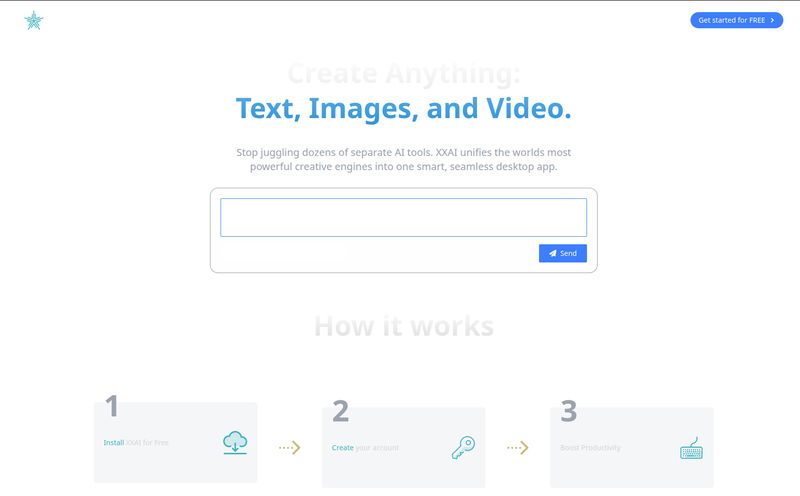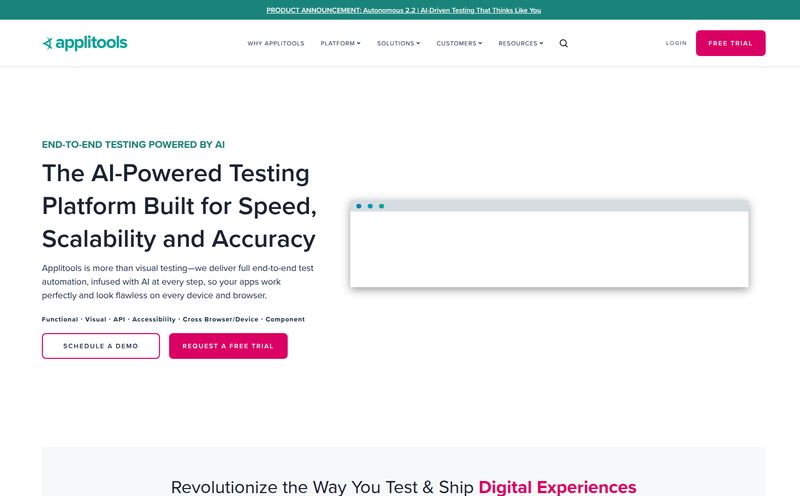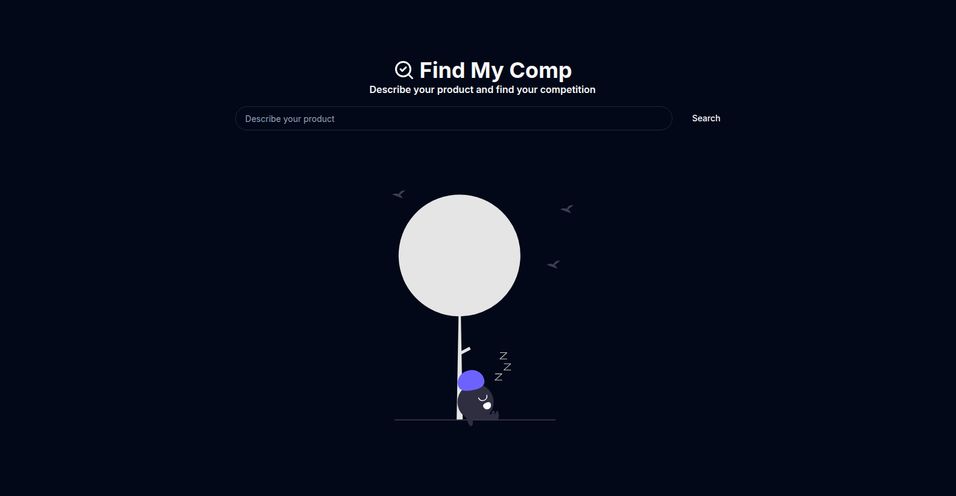Alright, let’s have a little heart-to-heart. If you’re a CG artist, a 3D modeler, or really any kind of digital creator, I want you to picture something. Go on, close your eyes. Picture that one folder on your hard drive. You know the one. It’s probably named something like “3D Assets,” “Downloads_sorted,” or my personal favorite, “TEMP_STUFF_DONT_DELETE.”
It’s a digital boneyard, isn’t it? A graveyard of forgotten FBX files, unlabelled textures, and that one perfect sci-fi greeble pack you bought on sale in 2019 and never saw again. We all have one. It’s our dirty little secret. We spend more time searching for assets we already own than actually creating with them. It’s maddening.
For years, I’ve been on the hunt for a real solution. Not just another clunky file browser, but something smart. So when I stumbled across Asseter.ai, my cynical SEO-brained heart skipped a beat. A tool made by CG artists, for CG artists? With AI? Color me intrigued. So I took it for a spin, and well… let’s talk about it.
What on Earth is Asseter.ai, Anyway?
First off, Asseter.ai isn't just one thing; it's a tag-team duo designed to tackle your asset chaos from two different angles. Think of it as a one-two punch against disorganization.
Asseter: The Marie Kondo for Your Hard Drive
This is the core of the platform. Asseter is a desktop application that points at your chaotic mess of a library and, through the magic of AI, attempts to make sense of it all. You feed it your folders, and it gets to work, automatically generating previews and, most importantly, tagging everything. It’s designed to turn that digital graveyard into a living, breathing, and most importantly, searchable library.
Scout: The Shazam for 3D Models
This part is just plain cool. Scout is their web-based search engine. But instead of typing “rusty metal panel with rivets,” you can just upload a reference image. A photo you took, a concept art snippet, a still from a movie... whatever. Scout then scours the big 3D stock marketplaces to find models that look like your picture. It’s visual search, and honestly, it feels a little like the future.
The Real Pain Point It Actually Solves
Let's be real, the problem isn’t storage space. Hard drives are cheap. The problem is cognitive load. It's the friction. It’s that 30 minutes you burn every morning looking for that specific tree model you know you have, before giving up and just buying a new one. That’s not just lost time; it's lost creative momentum.
Asseter isn’t just about organizing files. It’s about rediscovery. I pointed it at a decade-old project folder, and it unearthed textures and models I had completely forgotten about. It was like finding a twenty in an old coat pocket. Suddenly, I had a whole new arsenal of tools at my disposal—tools I’d already paid for!

Visit Asseter.AI
This is where the platform shines. It closes the loop between having an asset and using it. No more digital hoarding; it's time for digital deploying.
Putting the Features Through Their Paces
A flashy website is one thing, but how does it hold up in a real-world workflow? I got my hands dirty to find out.
AI-Powered Tagging That's Surprisingly Smart
I was skeptical about the AI tagging. I’ve seen some truly awful auto-tagging in my time. But Asseter’s AI is… pretty good. It correctly identified not just “car” but “sedan” and “vintage car.” It knew the difference between a “wooden floor” texture and a “wood plank” texture. Is it flawless? Of course not. It occasionally gets a bit confused, and you’ll want to go in and add your own project-specific tags. But it gets you 90% of the way there, and that’s a huge win.
Visual Search with Scout is a Game Changer
I can't overstate how much I love the idea of Scout. I pulled a still from Blade Runner 2049—one of those brutalist concrete walls—and threw it at the search. The results from various stock sites were genuinely impressive. It's so much more intuitive than trying to guess the exact keywords the original artist used. For concepting and finding that perfect background element, this feature alone is worth the price of admission. It just shortens the distance between idea and execution.
Does It Play Nice with My Software?
Any asset manager lives or dies by its integration. A tool that forces you to constantly alt-tab out of your main application is a failed tool. Asseter gets this. It’s built to integrate with major Digital Content Creation (DCC) software. This means you can browse and drag-and-drop assets directly into your scenes in programs like Blender, 3ds Max, or Cinema 4D. This is the kind of seamless workflow we've needed for ages.
Let's Talk Money: The Asseter.ai Pricing
Okay, the big question. What’s this going to cost me? In a world of confusing SaaS pricing, Asseter.ai is refreshingly simple. I’ve laid it out in a table so you can see it clearly.
| Plan | Price | Key Features |
|---|---|---|
| Free | $0 | 5 searches per month, free assets search, lists. |
| Daily | $1 / day | Unlimited searches for a 24-hour period. |
| Supporter | $5 / month | 100 searches per month. |
| Pro | $10 / month | Unlimited searches per month. |
My take? This is incredibly reasonable. The free tier is generous enough to actually see if it works for you. The 'Daily' plan is a brilliant idea for those crunch times when you just need to find a bunch of stuff right now. And ten bucks a month for the Pro plan? If it saves you even one or two hours of frustrated searching a month, it's already paid for itself. Honestly, it’s a no-brainer.
The Good, The Bad, and The AI-Generated
No tool is perfect. So here's my honest breakdown.
What I love: The speed and the visual nature of it all are fantastic. Scout's image search feels like black magic. The biggest win, for me, is breathing life back into my old asset library. It’s fast, it’s intuitive, and the price is right.
The Caveats: The partnership program asks for a minimum of 10,000 assets, which is a pretty high bar for solo artists or small teams. Also, you are putting a lot of trust in the AI. If the tagging AI has a bad day, your organization will suffer. It's a dependency you have to be comfortable with. It's a minor grumble, but a grumble nonetheless.
So, Who Is This Really For?
I see this being a massive hit with a few key groups:
- Freelancers and Hobbyists: Absolutely. This is your new best friend. It provides enterprise-level organization for a coffee-money price. It will save you time and sanity.
- Small to Mid-Sized Studios: This could be the central hub for your team's asset library. Getting everyone on the same page, using the same tagged assets, is a huge boost for efficiency and consistency.
- Large VFX & Game Studios: This is a maybe. Big studios often have deeply-entrenched, custom-built DAM systems. However, I can easily see Scout being used by concept and look-dev teams for rapid ideation, even if the core Asseter library isn't adopted company-wide.
In short, if you've ever stared at a folder named `Final_v2_USE_THIS_ONE`, this tool is probably for you.
FAQs About Asseter.ai
- What's the difference between Asseter and Scout?
- Asseter is the software that organizes the 3D models and textures you already have on your computer. Scout is the online search engine that helps you find new models from stock websites using an image.
- Is Asseter.ai free to use?
- Yes, there is a free plan! It gives you 5 searches per month, which is perfect for trying it out and for very light users.
- What kind of files does Asseter support?
- It's designed for CG artists, so it supports all the usual suspects: 3D model formats like .fbx, .obj, .blend; and image textures like .png, .jpg, .exr, and .tiff. It's built to handle a typical project's file mix.
- Can I use Scout to find free 3D models?
- Yes! Scout searches across various marketplaces, and many of them have extensive free sections. It will show you both free and paid assets that match your image search, giving you plenty of options.
- How accurate is the AI tagging really?
- In my experience, it's about 90% accurate for common objects and textures. It's not perfect and might need some manual tweaks for very specific or abstract assets, but it does the vast majority of the heavy lifting for you.
- Do I need to be online to use Asseter?
- Once your local library is scanned and tagged, you can browse and use your assets offline. You would need an internet connection for the initial AI tagging process and for using the Scout search engine.
My Final Verdict
I’ve seen a lot of tools come and go, promising to revolutionize our workflows. Most of them are just hype. Asseter.ai feels different. It’s not trying to reinvent the wheel; it’s just making the wheel spin a hell of a lot smoother. It’s a practical solution to a painfully common problem, built by people who clearly understand that problem inside and out.
It’s not a magic wand that will instantly make you a better artist, but it removes one of the most tedious, frustrating, and creativity-killing parts of the process. And for that, it gets a massive thumbs up from me. Go try the free plan. Seriously. Your “TEMP_STUFF” folder will thank you.



